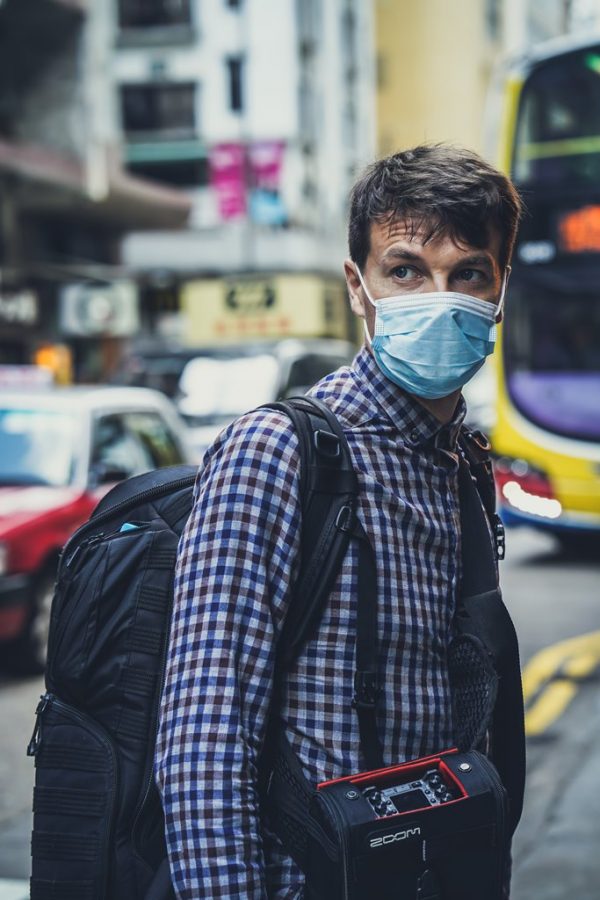Andy Davison, a long term expat in Malaysia presents his opinions on local news.
With social media full of shared news regarding China’s recent coronavirus outbreak, naturally, this includes a lot of misleading information. What do we actually know, and who can we trust with the right information?
The biggest impact clearly is in China, and they have acted rather quickly in try in trying to contain the spread of the virus despite it being a very difficult task. Other major cities have reacted at different speeds in response to the outbreak, with places like Hong Kong immediately banning any visitors from Wuhan from entering their territory. Some countries including Japan and the United States have sent special flights to the affected area to evacuate their citizens who will then be put into quarantine. Australia have decided on sending their evacuated citizens to be quarantined on remote Christmas Island, formally used for illegal immigrants.

Image credit: Newsweek
The reality is, as this is a relatively new strain of coronavirus, there needs to be a considerable amount of time spent studying it in order to combat it. At this point, reports have noted that this particular strain originated in bats, and appears to spread more quickly than other similar viruses, although the death rate is much lower.
At the time of writing, there are officially 6000 cases of the disease with 170 deaths, but both numbers are sure to increase with many people believing the actual number to be much higher.
About the Coronavirus
Here is what we have learned from credible sources and believe to be true:
The coronavirus is a strain that comes from a family of viruses that cause respiratory illnesses such as the common cold according to the Centers for Disease Control and Prevention (CDC) Influenza, which affects millions of people every year, is a type of coronavirus. This latest version however, is reported to have originated in a live seafood wholesale market in China, that also sold illegally trafficked exotic wildlife such as civet cats, live foxes, crocodiles, wolf puppies, giant salamanders, snakes, rats, peacocks, porcupines, camel meat and other game. According to research results, the coronavirus (2019-nCoV) most likely originated in bats. However, as no bats were sold at the seafood market in question, researchers suggest that the likely carrier of the virus were probably other animals that likely consume bats, thus acting as a transmitter of the virus to humans.

Before this, the two other coronaviruses that caused global panic were the severe acute respiratory syndrome (SARS) originating in China in 2003, followed by the Middle East respiratory syndrome (MERS) which first appeared in Saudi Arabia in 2012. Both of them disappeared from the news in 2015 and each were reported to have caused over 800 deaths. This latest virus was identified in December 2019.

Image credit: Wikipedia
Of course the fear factor is raised because of the coronavirus (Spanish flu) which arose in 1918 and infected some 500 million people and killed over 10% of them (50 million). Since then, major advances in treatment and other preventive actions have been put into place to minimise the risk of recurrence.
Influenza on the other hand causes many more deaths as it is rather different to the common cold, and tend to be a lot more serious. It usually includes coughing, fever, muscle and joint pain, sore throat, and it can lead to more serious illnesses like pneumonia and bronchitis. People with lowered immunity systems due to other illnesses, pregnancy, or old age are most at risk of serious illness.
While some people are panicking about the risks from the new virus, the risk of dying is very small compared to flu related deaths. The WHO estimates that up to 650,000 a year die from illnesses linked to “seasonal flu”. People with weakened immunity are most at risk, such as infants and senior adults. In industrialised countries, deaths occur most often in the elderly, while child deaths are more common in developing countries.
Seasonal flu arises during the winter months in the northern and southern hemispheres but happens year round in tropical climates like Malaysia.
China has taken action
China has taken dramatic action by imposing a lockdown on Wuhan, the city where this latest variant was first identified, as well as some other cities in Hubei, the province where it originated. Wuhan is a city of about 11 million people and is roughly 1100 kilometres south of Beijing. Images of the city show that most people are not venturing out. What’s worrisome, is that many citizens have left the region before the lockdown, and there are concerns that some of them might be carriers of the virus. Regardless, new medical centres and hospitals are being rapidly constructed to house infected patients.

Image credit: Jeremy Stenuit
It was an unfortunate time for China, as Chinese New Year is their biggest holiday and millions were unable to travel to meet up with family. The economic impact on China is not yet known but is expected to be prodigiously large.
Spreading around the globe
With so many Chinese citizens traveling the globe, and with people having travelled to the affected areas in China, it is not surprising to see 2019-nCoV now surfacing in other countries. Even though flights coming into and leaving Wuhan have been temporarily suspended, both Singapore and Malaysia have reported identifying seven cases of the virus and more are expected. Cases have been detected in most Asian countries as well as further afield in the United States, France, and Australia.
Risk of infection
For most people, the risk of picking up the disease is remote unless you have been in close proximity with someone who has it, which for the time being would most probably mean someone from Wuhan, or who have recently visited there. And with reports on people having contracted the virus without showing any visible signs and symptoms, information is still rather limited directly causing a rise in paranoia.
Like other flu viruses, 2019-nCoV is spread by people coughing or sneezing either directly on to another person, surface, or object which is then easily transferred to others via nose, eyes, or mouth. The recommended face masks during these times therefore have limited value in protection against the virus, but rather work as containment if you already have it and need to reduce the risk of it spreading. Obviously very crowded or enclosed spaces put people at risk. The most effective way to avoid catching the virus is to wash your hands frequently, carefully, and thoroughly, and avoid touching your face, nose and eyes.

More information about the virus will emerge in time, ascertaining to how it spreads, the incubation period needed, and how deadly it actually is. Only then can new antiviral drugs be developed for proper treatment. In summary, at this time, there is no reason to think it far more serious than previous outbreaks.
"ExpatGo welcomes and encourages comments, input, and divergent opinions. However, we kindly request that you use suitable language in your comments, and refrain from any sort of personal attack, hate speech, or disparaging rhetoric. Comments not in line with this are subject to removal from the site. "



















